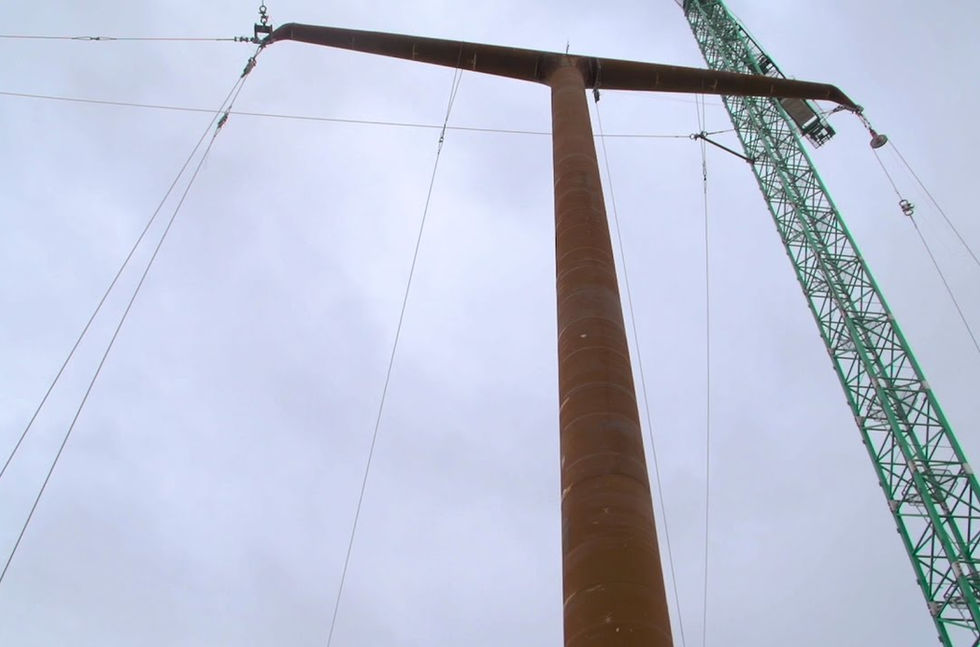THE T-PYLON
Power:2 x 400 kV
Height:35 metres / 114 feet
Units/km:3 (5 units/mile)
Material:Hot-dip galvanised steel, painted
Assembly:On-site and quick - less than 10 parts
Installation:Simple monopile foundation
Production possible anywhere in the world
Developed:2011-2014
1st prize in int. competition for RIBA
Nominated for the IET Innovation Award 2014
Gold Prize, CIGRE Seoul 2017
Award winner, UK Steel Awards (SSDA) 2017

21st Century Design for Nationalgrid
The T-Pylon design became winner in an international competition to find a 21st century design for carrying high voltage overhead lines. National Grid UK has begun construction of a line of the new high voltage T-Pylons, which at 35 metres are up to a thrid lower than traditional lattice towers. Six of the new pylons have been erected at National Grid's training academy in Eakring, Nottinghamshire, each demonstrating a different function in the network.
The T-Pylon is a structure of only few parts, can be erected quickly, and requires virtually no maintenance. The radical innovation is the reassessment of the conductor/cable arrangement. The prismatic configuration of the cables allows a reduction in the pylon's height by more than 30%. The footprint of the power lines as well as the electro-magnetic field (EMF) radiation is reduced.
The most remarkable characteristic of the T-Pylon design is that all conductors are carried by a single attachment point. Traditionally, such a structure would have three separate arms - each carrying an individual conductor. This unique attachment point was studied closely to ensure its robustness and resistance to fatigue. Complex analysis and physical loading tests were carried out to simulate climatic conditions such as extreme winds and ice loads. Investigations were made into the dynamic performance of the structure under simulated vibrations.




National Grid’s set-up consists of two suspension pylons (0° deviation), one “flying angle” pylon (deviation <10°), one angle pylon (deviation <30°) as well as two types of terminal pylon with respectively lozenge or portal design.
Due to the limited area available the span has been reduced to 200m which modifies the perspective of the general view.
The T-Pylons’ presence in the landscape varies with the sky and light conditions. In that respect the pylons seem a more organic element in their visual context compared to the ever dark silhouettes of traditional grid towers.
Contrary to the impression conveyed by these photos from an October day with rapidly shifting weather, all T-Pylons at Eakring have the same hue, except for the ”flying angle” pylon that is slightly darker.
National Grid T-Pylons carrying 2x400 kV are only 35m high for a 350m span whereas, due to differing national norms, their future French Rte counterparts will be even lower, only 30m.
BYSTRUP
Vermundsgade 40a DK 2100 Copenhagen Denmark Phone +45 39 27 00 85 Company reg. no. 32099734
BYSTRUP 2017 © All rights reserved | Cookie Policy Site disclaimer
Contact bystrup@bystrup.dk

"To see the T-Pylon becoming a reality just 20 months after winning the competition is a fantastic achievement for BYSTRUP and Nationalgrid"





